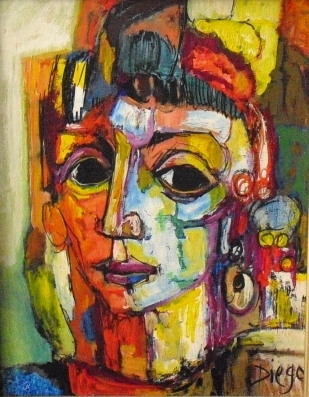- Fauvism, led by André Derain and Henri Matisse, revolutionized early 20th-century modern art.
- Characterized by strong colors and painterly qualities, it marked a departure from Impressionism’s realism.
- The movement was short-lived (1905–1908) but influential, with Fauves exploring non-Western art forms.
Defining Fauvism: The Emergence of “The Wild Beasts”
Fauvism, a term derived from “les Fauves” (French for “the wild beasts”), encapsulates a radical art movement led by visionaries like André Derain and Henri Matisse. Beginning around 1904, Fauvism distinguished itself through a deliberate departure from the representational values upheld by Impressionism. Instead, it emphasized painterly qualities and a bold use of color.
The Pioneers and Their Palette
Key figures alongside Derain and Matisse included artists like Albert Marquet, Charles Camoin, and Georges Braque. Their work was notable for its vivid colors, abstracted subjects, and innovative brushwork. This style was partly an evolution of Van Gogh‘s Post-Impressionism, infused with the pointillism of Seurat and the saturated colors of Gauguin, especially evident in Derain’s 1905 works.
Influences and Inspirations
The Fauves drew inspiration from various sources, notably African and Oceanic art, which later influenced Cubism. Teachers like Gustave Moreau also played a crucial role, encouraging students like Matisse to explore beyond conventional artistic paths.
The Fauve Exhibitions: A Burst of Color in the Art World
The 1905 Salon d’Automne
The 1905 Salon d’Automne was a defining moment for Fauvism. Here, works by Matisse, Derain, and others showcased their new approach, characterized by an “orgy of pure tones.” The term “Fauvism” itself originated from critic Louis Vauxcelles’ comments during this exhibition.
Following Exhibitions
Subsequent exhibitions, like the Salon des Indépendants in 1906, further solidified Fauvism’s impact. Matisse’s “Le Bonheur de Vivre” became a focal point, drawing both criticism and acclaim for its radical departure from traditional styles.
Key Works and Their Significance
- Henri Matisse’s “Luxe, Calme et Volupté” (1904): This painting is a landmark in the Fauvist movement, showcasing the transition from Impressionism to a bolder, more expressive style.
- André Derain’s “Charing Cross Bridge” (1906): A fine example of Fauvism’s vibrant color palette, illustrating the London landscape in unprecedented hues.
The Legacy of Fauvism
Although short-lived, Fauvism’s impact on modern art was profound. It paved the way for future avant-garde movements and encouraged a broader appreciation for non-traditional art forms. The Fauves’ exploration of color and form continues to inspire artists and art enthusiasts alike.
Frequently Asked Questions
- What defines Fauvism in art?
Fauvism is defined by its bold, vivid use of color and abstracted forms, prioritizing painterly qualities over realistic representation. - Who were the leading figures of the Fauvist movement?
André Derain and Henri Matisse are widely regarded as the leaders of Fauvism. - How long did the Fauvist movement last?
Fauvism as a distinct movement lasted from 1905 to 1908, although its influence extended beyond these years. - What influenced Fauvist artists?
Influences included Post-Impressionism, pointillism, and the saturated colors of Paul Gauguin, as well as non-Western art forms. - Was Fauvism well-received during its time?
Fauvism received mixed reactions, with some critics dismissing it while others praised its innovative approach. - How did Fauvism impact future art movements?
Fauvism influenced subsequent avant-garde movements and encouraged exploration beyond traditional European art forms. - Did Fauvism influence any specific artistic techniques?
Fauvism’s bold color application and brushwork influenced later movements like Expressionism and Cubism. - What role did African and Oceanic art play in Fauvism?
These art forms inspired Fauves to explore new aesthetics and contributed to the development of Cubism. - How did Gustave Moreau influence Fauvist artists?
Moreau encouraged his students, including Matisse, to experiment with color and form, paving the way for Fauvism. - What is a notable work by a Fauvist artist?
“Luxe, Calme et Volupté” by Matisse is a seminal work, encapsulating the essence of Fauvism’s approach to color and form.
Conclusion
Fauvism, a whirlwind in the art world, redefined modern art’s boundaries. Its legacy, though tied to a brief period, continues to resonate, underscoring the enduring power of color and expression in art.





